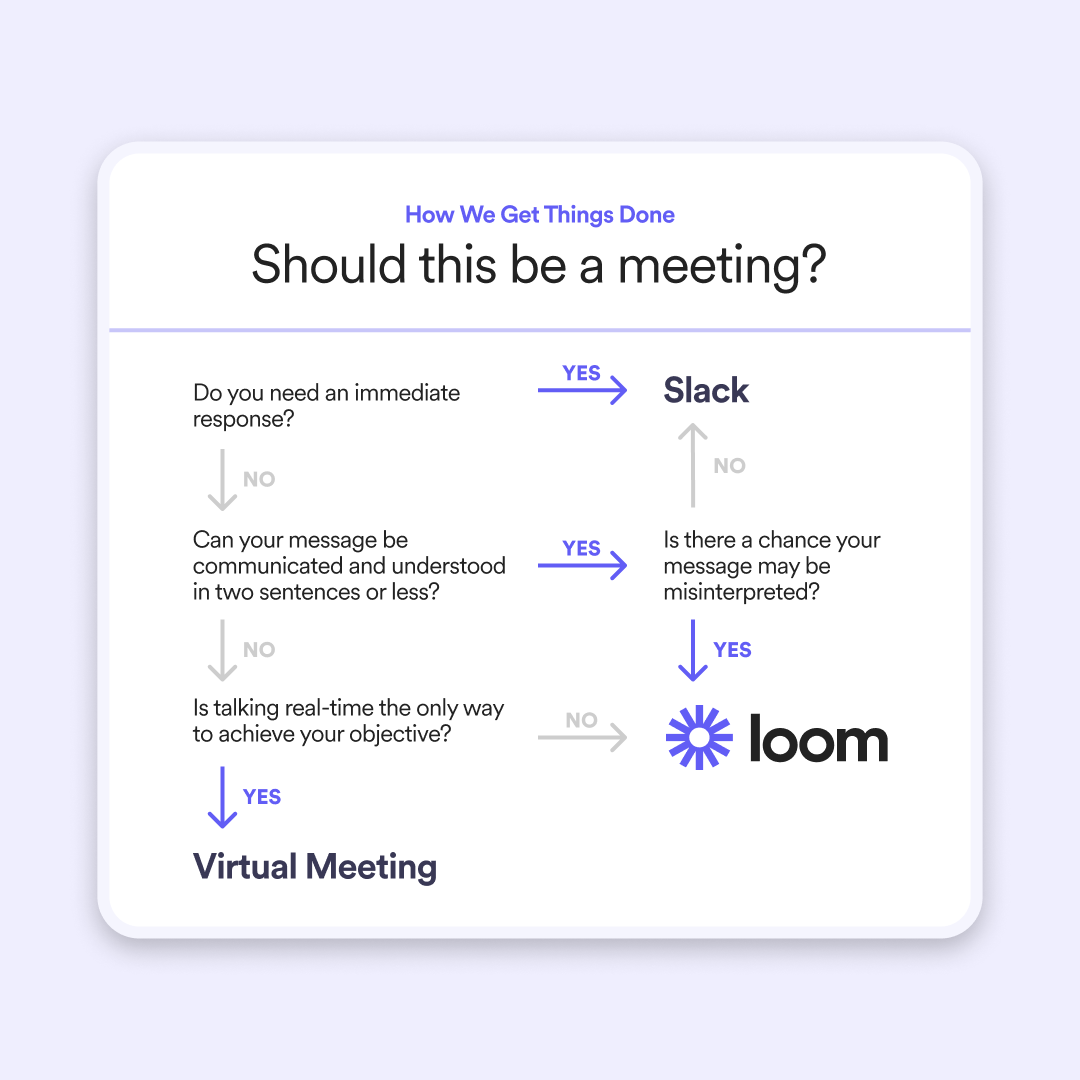Managing effective communication can be challenging in a hybrid work context. There are, however, new approaches leaders can experiment with to mitigate this division. In a recent panel hosted by Fellow.app, Thinking About The Future: A Hybrid Work Model, Loom’s Director of Communications Emily Busse spoke with experts from Oyster, Upwork, and Because Monday. During the conversation, they shared essential tips leaders can use to communicate effectively and equally with distributed teams.

The future of work is hybrid. As companies are easing out of over two years of strictly remote work and moving into a hybrid context, agile adaptation is required. A primary concern hybrid work managers have is how to ensure effective and consistent communication across distributed teams. Leaders are tasked with communicating expectations equally with both in-office and remote workers. The way leaders manage their teams must evolve—from adapting net-new workflows to adopting emerging software.
1. Consistent documentation is key
Documenting information consistently and reliably is a challenge for almost every organization. The effort of knowledge scaling eats up costly time and resources. In fact, Loom’s recent survey of 3,000 office workers in the U.S. and UK found that 28% of office workers report having to dig through old messages to find information they need.
Consistent documentation not only unlocks precious time, but it also helps to ensure equal opportunities for both in-person and virtual employees. Organizations that build repeatable documentation habits are more adept at ensuring decisions aren't made unilaterally or in silos.
This knowledge scaling can be done both in synchronous and asynchronous formats based on the situation. In synchronous work, leaders can build different documentation habits during both team meetings and 1:1 meetings. Asynchronous options involve documenting processes in your company's internal database so employees can independently return to this resource during work to clarify instructions. For example, using the combination of a Loom embedded in your Fellow agenda is a practice that consistently ensures clear communication—in whatever format your team prefers.
2. Encourage sharing in the company workspace
Knowledge and information sharing across a company can be a helpful tactic in many different contexts. The Loom survey found that 46% of office workers forward emails and 29% forward chat messages to disperse info to other employees at least five times a week.
When updates and information are made public across a company, team members are less likely to feel disconnected or siloed. Making sharing the norm also helps to increase productivity as the information becomes self-serve or managers can respond to questions with a linked resource rather than re-explaining it.
At Loom, the team heavily utilizes its own product for knowledge sharing and unlocking self-serve access by posting looms to the company workspace. When a loom has potential utility for more than one recipient, posting it allows teams across the organization to find and digest that information, share it with others on their team, and come back to it in the future. Loom HQ was built to allow relevant Looms to naturally surface based on the keywords used in the transcript and the tags used in the video.
3. Build rituals that translate into workflow
One way to make the process of knowledge sharing easier is to automate the workflow. For example, Loom’s all-hands meetings are hosted and recorded in Zoom, and then auto-uploaded to our Loom workspace. This way the team knows to expect a recording within that same workday—regardless of whether they are able to watch it live or not.
The Loom team also empowers all employees to decide when a meeting should be sync or async. The Loom survey found that 32% of modern office workers say the majority of digital work meetings could be replaced by recorded/asynchronous video. At Loom, this practice is modeled by leadership, but it’s also delivered in the form of a flowchart that’s first introduced during new employee onboarding. This gives every teammate the autonomy to evaluate whether a message or interaction requires live time/scheduling, or if it can be handled via async channels (chat or Loom).

Parting Advice
As we enter permanency in the hybrid work era, communication in distributed teams is a challenge leader across all teams must learn to adapt to. Thankfully, many tools, approaches, and resources are available for new managers or seasoned leaders looking to adapt to the new way of working. To learn more from the panel’s expertise, view the entire conversation: Thinking About The Future: A Hybrid Work Model.

